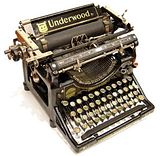I like studying the master works of artists like Edgar Degas. This work is a copy of his well known Portrait of Mary Cassatt.

New School Color - Casey Klahn



Umber River, Upside Down
The River Series is a collection of pastels that I painted specifically for the Sausalito Art Festival in September, and is currently exhibited in Kirkland, Washington through January 4th., 2010. These paintings adhere to a few simple ideas that are concerned with formal qualities. If you were to describe them as representational, you would be less than right. On the other hand, if they remind you of a specific place, you would be right on track. This "instability" is fully intended - they are meant to toe the line between abstraction and description.
"A song is anything that can walk by itself." Bob Dylan
Light River Reflections, Upside Down
Below, I lay out the formal concepts that I used in the River paintings, but I would say that almost any set of ideas would have worked as long as they were recognizable as a thread throughout the series. That's why it is so important for the artist to get a one person venue. The viewer needs to connect the ideas of the whole.
Here are the threads I wanted:
Dark areas (dark secrets) that I used as eye magnets.
A fairly even value spread - which means that a range of values are used from very dark to somewhat light.
A drawing approach - line and value compositions; bare process versus resolution.
Intense color passages, because that is a signature aspect of my work.
River Aine, Upside Down
The process I followed in the River Series did involve an actual place as the starting point. I stood on the bank of the Little Hoquiam River and absorbed what impressions I could, and took some photos. I worked up several drawings, in graphite, charcoal or pastel. A few were taped up on my studio window and viewed with light passing through them. I looked at them on my computer screen as well. Finally, I spun the images from memories, and worked from the specific to the general - I wanted your river, not mine, to be foremost.
"If the picture has a countenance, I keep it." deKooning
Here are some more observations about the series:
I used landscape formats, which is an easy formal way to portray realism.
Low points of view were favored, which makes the river scene easier to apprehend.
I didn't want direct light sources - no blue skies.
Some classic compositional tools were employed, in order to create easier access into the picture.
The water became a place for abstract play.












 I am pleased to announce that I was awarded a First Place in the Drawing category at the Sausalito Art Festival. It was a big surprise, and I am grateful to the festival and the patrons who visited the event.
I am pleased to announce that I was awarded a First Place in the Drawing category at the Sausalito Art Festival. It was a big surprise, and I am grateful to the festival and the patrons who visited the event.
Sayalessandra covers Otis Redding
Did you know that the dock of the bay that Otis Redding sat upon was in Sausalito, CA? And, coincidentally, so am I.
Sausalito Art Festival.
 Two Tyrants in a Motorcade
Two Tyrants in a Motorcade
